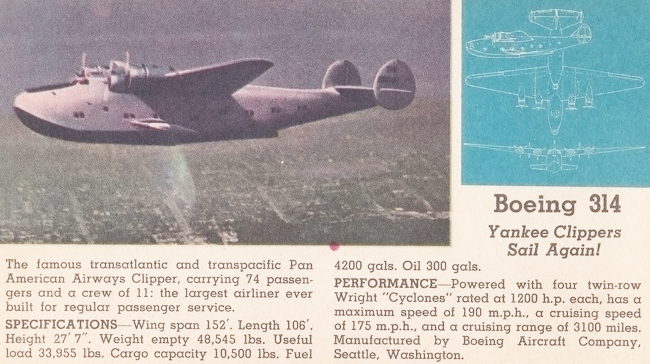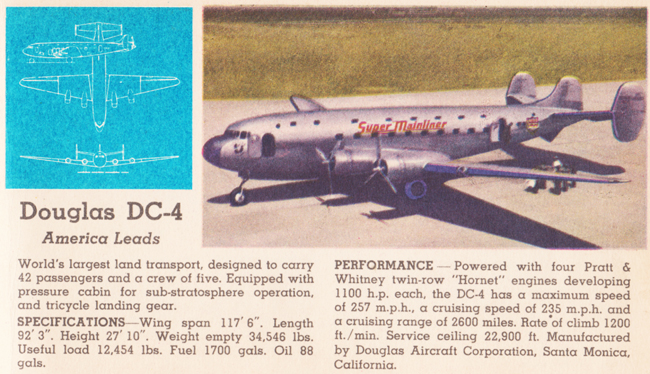Flying the Atlantic
Today, we fly the Atlantic. The University of Houston's College of Engineering presents this series about the machines that make our civilization run and about the people whose ingenuity created them.
So many listeners have sent me things I should've read -- had I world enough and time. I was cleaning up the other day and found a 1938 issue of Popular Aviation. I've lost the note that came with it, so I'll thank the sender anonymously. It is intriguing.
You see, this was eleven years after Lindbergh flew the Atlantic, and only five months after Wrong-Way Corrigan. Corrigan left New York, landed in Ireland, then claimed that California had been his goal -- that he'd misread his compass. So flying the Atlantic was clearly possible. But, were commercial crossings feasible?
This magazine has a light-hearted article about Corrigan titled, "He's Laughing at the World". That's followed by a far more serious one titled "This Transatlantic Poker Game". It's highly charged. It blames the British for obstructing commercial flights across the Atlantic. I have no brief in that argument. So I'll skip the polemics and go to the airplanes.
The underlying issue is: what sort of plane will finally be able to turn a profit on commercial flights. We're shown great seaplanes, four-engine ground-based airplanes, and outlandish tactics: The Europeans are launching four-engine seaplanes from catapults -- even carrying them aloft, piggy-back, on still larger airplanes. All to save the fuel needed for takeoff.

First two pages of the "This Transatlantic Poker Game" article in the 1938 Popular Aviation. Click on this image to enlarge it.
The problem is, most of those airplanes did little more than carry mail. And they appeared to be doing so under government subsidies -- just to gain prestige. But Boeing had just been given a contract to build its great flying boat, the B-314. Six months later, it began passenger service between Baltimore and Ireland.
Then, almost immediately, Germany invaded Poland and began WW-II. Now four-engine bombers had to be ferried to England on routes with island stops across the Atlantic. But, by war's end, the land-based B-29 could fly 5000 miles -- enough to cross the Pacific Ocean. Suddenly those old flying boats looked downright clunky.
And this remarkable old magazine gives us a third article -- another harbinger of ocean hopping. It's about flight-testing the new land-based Douglas DC-4. That was the 4-engine follow-up to the famous DC-3 - which had revolutionized passenger travel over land.
While this article gives off an aura of rosy optimism, the DC-4 actually needed a lot more work. So modifications were made, and it finally emerged as a superb military transport in 1942. When commercial transatlantic flight began again, right after the war, the DC-4 was the first great passenger carrier to provide it.
So this old magazine foreshadowed a future, there for readers to see, but only through a glass, darkly. It's always like that. We glimpse the future but fail to discern it. Our path to transatlantic travel was there in the coming of long-range, fast-moving, sleek-bodied, land-based airplanes. It all seems so clear in hindsight.
I'm John Lienhard at the University of Houston, where we're interested in the way inventive minds work.
Popular Aviation. December 1938. See the articles titled, "He's laughing and the World", "Testing the DC-4", and "This Transatlantic Poker Game".
See also the Wikipedia pages for Transatlantic Flight, Air Transport Command, Boeing B-314, and Douglas DC-4. For a more nostalgic look at the old flying boats, see Episode 1578.
See Episode 2443 for one of the more astonishing early German attempts at beginning transatlantic service
Below are two pages from J. B. Walker, Airplanes of the U.S.A.. (Racine, WI: Whitman Publishing Company, 1940) These, words and images, give us a sense of the way we looked upon the Boeing B-314 and the Douglas DC-4 before WW-II.


Notice the triple rudders on the DC-4 and the limited range of 2600 miles. The 1945 version had a single rudder and a range that was improved to over 4000 miles.
This episode was first aired on July 20, 2012.